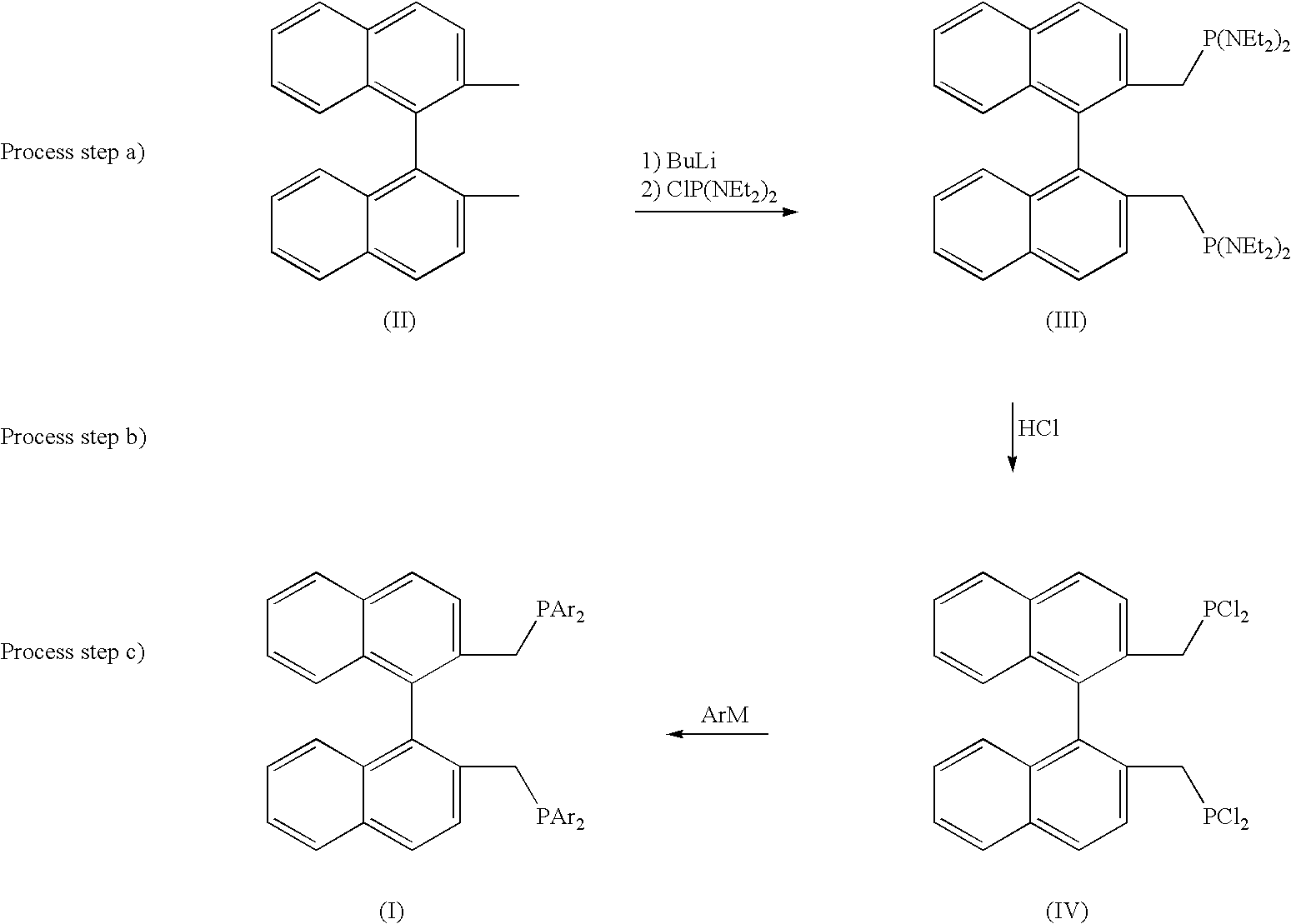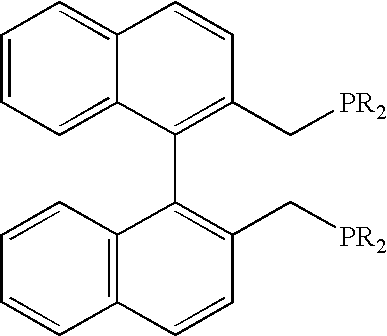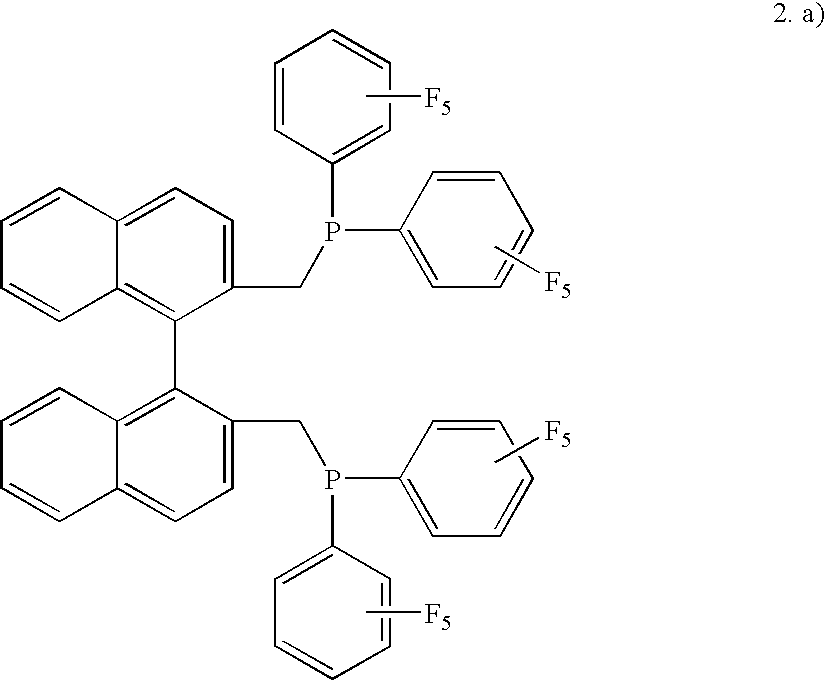Method for producing diphosphines and the use thereof
a technology of diphosphine and phosphine, which is applied in the direction of organic compound/hydride/coordination complex catalyst, organic compound/chemical process catalyst, organic compound/chemical process catalyst, etc., can solve the problem of product mixtures whose handling is problematic, formation of superstoichiometric amounts of bromide waste, and inability to achieve symmetrical bis(diarylphosphinoalkyl)-1. , to achieve the effect of high yield
- Summary
- Abstract
- Description
- Claims
- Application Information
AI Technical Summary
Benefits of technology
Problems solved by technology
Method used
Image
Examples
examples
[0041]The following examples illustrate the process of the invention without restricting the process to them.
1. General Procedure for Preparing the Diphosphines
[0042]Solvents: All solvents used are dried by known methods and distilled and stored under argon.
a) Preparation of 2,2′-bis[bis(diethylamino)phosphinomethyl]-1,1′-binaphthyl
[0043]The major part of the solvent is removed from 33.2 ml of n-BuLi solution (1.6 M in hexane, 53 mmol) under reduced pressure with gentle warming. After cooling in an ice bath, 25 ml of ether and 7.9 ml of tetramethylethylenediamine (53 mmol) are added. A solution of 5 g of 2,2′-dimethyl-1,1′-binaphthyl (17.7 mmol) in 30 ml of ether is slowly added dropwise while stirring and cooling. The reaction mixture is allowed to stand for 24 hours at room temperature and subsequently for a few hours at 0° C. The supernatant solution is decanted off and the precipitate obtained is washed twice with 25 ml each time of hexane.
[0044]The deep red precipitate is admix...
PUM
| Property | Measurement | Unit |
|---|---|---|
| temperatures | aaaaa | aaaaa |
| temperatures | aaaaa | aaaaa |
| temperature | aaaaa | aaaaa |
Abstract
Description
Claims
Application Information
 Login to View More
Login to View More - R&D
- Intellectual Property
- Life Sciences
- Materials
- Tech Scout
- Unparalleled Data Quality
- Higher Quality Content
- 60% Fewer Hallucinations
Browse by: Latest US Patents, China's latest patents, Technical Efficacy Thesaurus, Application Domain, Technology Topic, Popular Technical Reports.
© 2025 PatSnap. All rights reserved.Legal|Privacy policy|Modern Slavery Act Transparency Statement|Sitemap|About US| Contact US: help@patsnap.com



